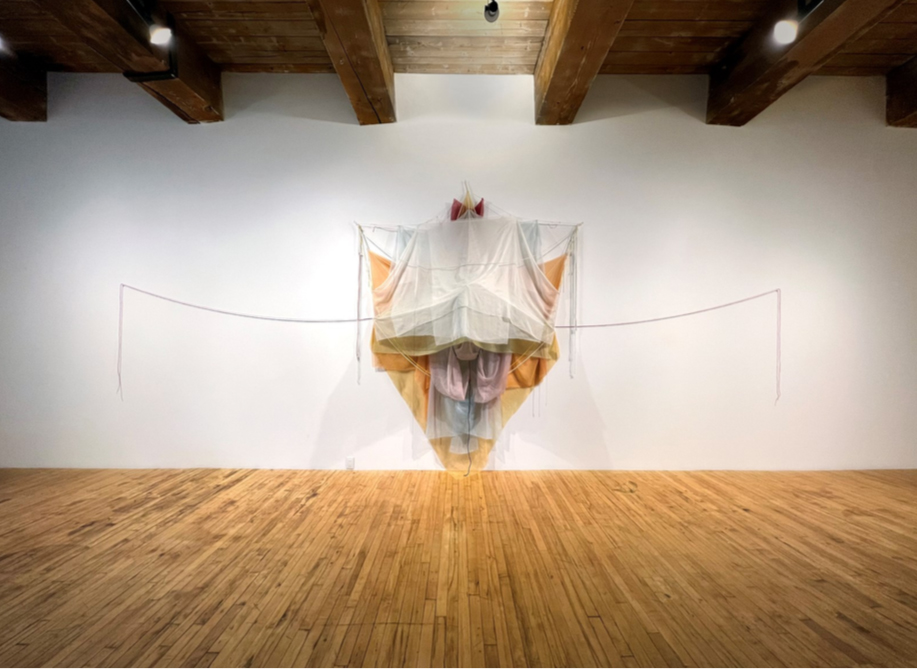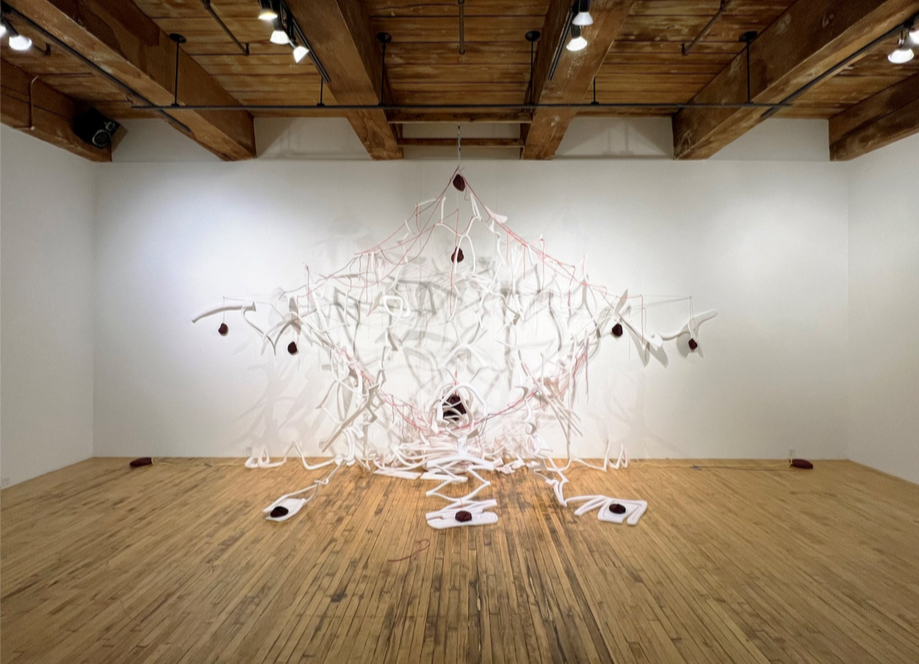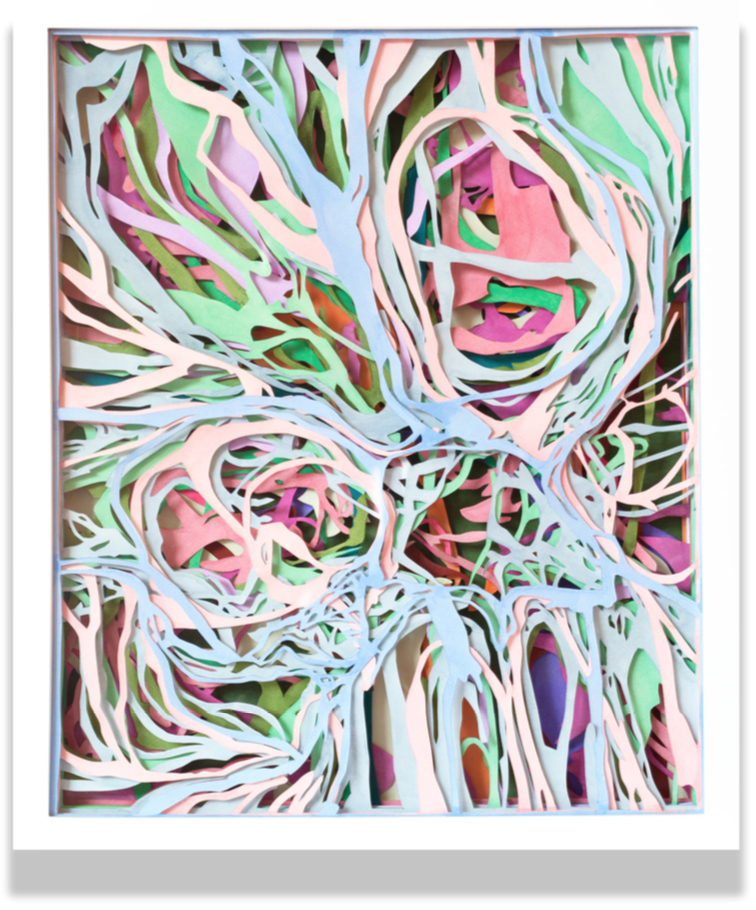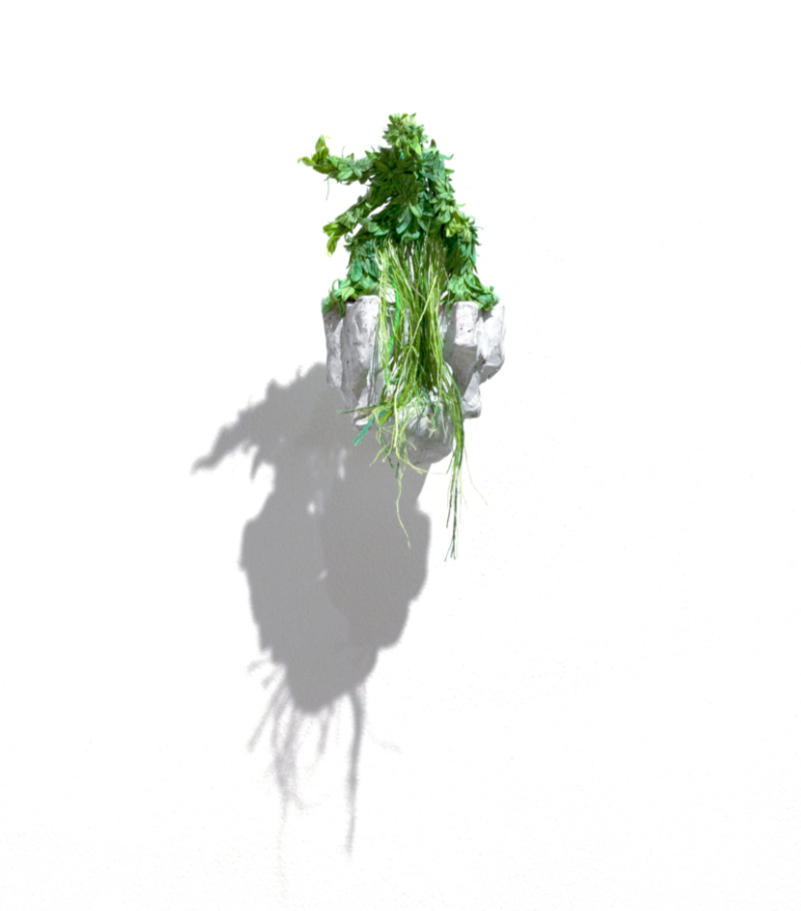by Steve Rockwell

Entering her exhibition at Christopher Cutts Gallery in Toronto, Sherri Hay confronts us with a simple request: “Let’s not go back to normal.” I admit that the plea triggered an instant compulsion in me, not unlike the response to a host whose house you’ve entered, wishing you to take your shoes off. What did the artist mean by normal, and what is it that we must continue to do? As a gumshoe, I would have to tread where the evidence led me.
The dominant work on the facing wall from the entrance is Hay’s wall installation “Never more stable than a rainbow.” The shroud-like assemblage of sheer curtain, rope, and rod, true to its title is evanescence personified – held in view here for the duration of the exhibit by a handful of hooks and screws. Like the flush of arching bands of colour in the sky after a storm, a positive nailing of the piece might be, “The Ghost of Pestilence Past.”

Less hopeful is “Just as soon as a verb,” the installation on the wall of the adjoining gallery – similarly ghostly, but a spectre tumbling into the ominous. Our deference is to Hay’s artist statement and “bardos,” a Tibetan Buddhist word describing the period of chaos, shock, change and fear that a person experiences when they die. “Just as soon as a verb” is a skeletal hangman on life-support, its bleached styrofoam bones splayed between ceiling, wall, and floor by ropes and sand bags. Its dying wishes are nursed by the gallery attendant as sand bucket pours at four-hour intervals – cycles of imperceptible heaves and sags. Sand is ingested in the cranial head bucket and disgorged down the spinal column gullet to the bucket on the floor like granules of time in a bifurcated hourglass. Might this be the artist’s response to “these days of incipient ecological collapse,” her expression of “urgency to the question of how we relate to the objects around us?”

The artist’s “Bardo” boxes serve as vitrines displaying cuts resembling highly-magnified animal and vegetable tissue. Pale pink, red, blue, green layers of watercolour and gouache in the foreground are suggestive of the chlorophyll of leaf and under-the-skin flesh, vein, and corpuscle. The meandered looped strings of layered paper form a sealed labyrinthine chamber – visible, but impenetrable somehow. The expressionism of Edvard Munch comes to mind. As the word suggests, “Bardo!” might be the incantatory scream of the soul in the transit from life as it crosses to death.

The “Dreams of awakening here in this brightness” series of diminutive wall sculptures hint at a new life form altogether – leafy flecks of vegetable with the animal, revealing cotton roots and tendrils with the polymer clay and painted bronze. Would these sprigs be the imagined after life of Hay’s humankind – life after civilization’s bardo? Pre-Christian Europeans seemed to have literally worshipped trees, not the gods in the trees, as Hay describes in her statement. After the implied apocalypse, creeping vines will certainly clothe our blue marble afresh. In Hay’s imagined life as a tree, souls might find themselves counting tree rings for a thousand years or more. Hay’s “Let’s not go back to normal,” exhibition has furnished us with a bucketful of seed for thought.
